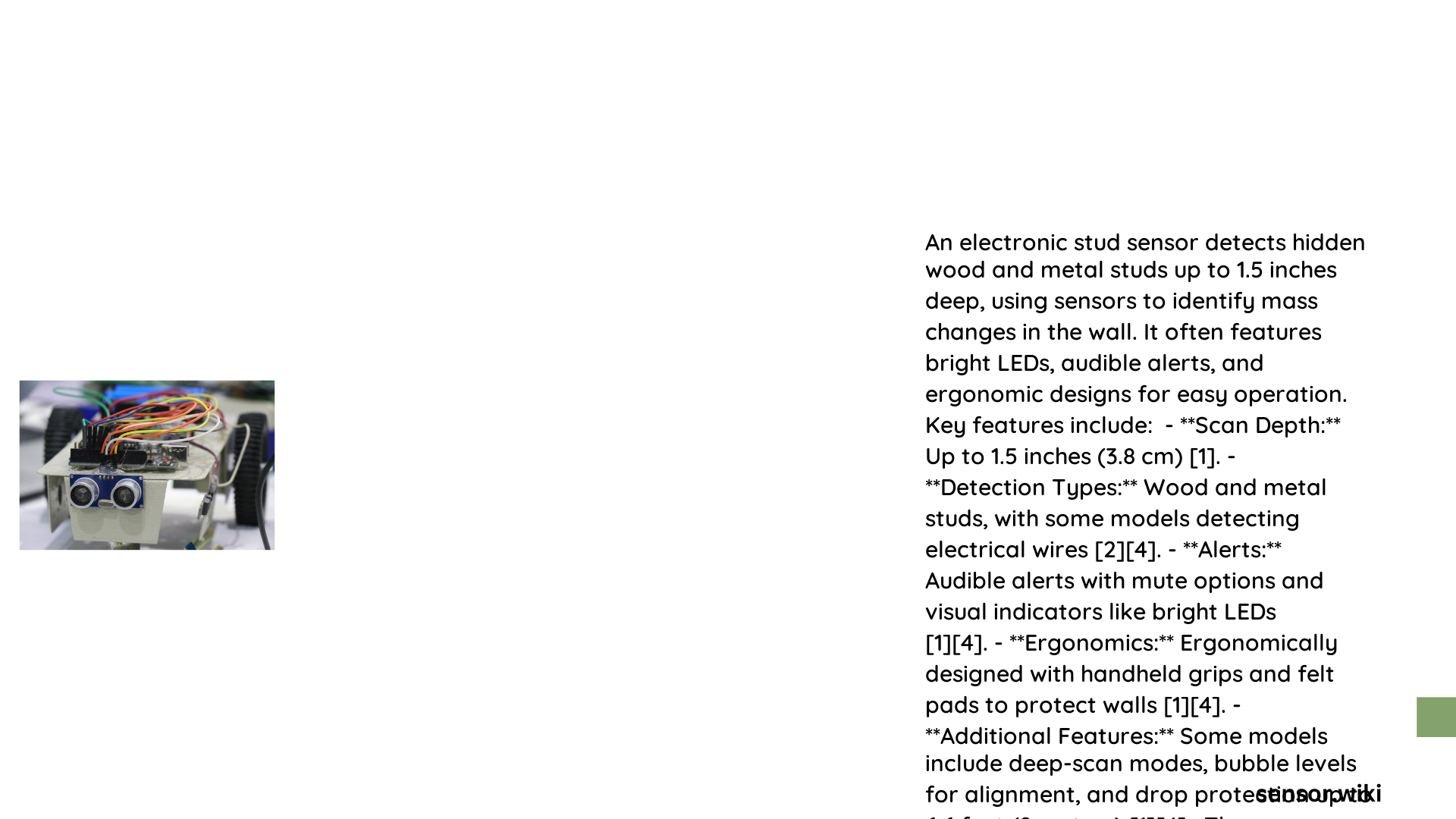Electronic stud sensors represent cutting-edge technology designed to help homeowners, contractors, and DIY enthusiasts precisely locate structural elements behind walls. These sophisticated devices utilize advanced electronic scanning mechanisms to detect wood, metal studs, electrical wires, and other hidden objects, transforming complex wall detection into a simple, accurate process that minimizes guesswork and potential damage during home improvement projects.
What Makes Electronic Stud Sensors Essential for Home Projects?
Electronic stud sensors have revolutionized wall scanning by providing unprecedented accuracy and versatility. Unlike traditional methods that rely on manual tapping or visual estimation, these devices leverage sophisticated sensor technologies to deliver reliable results.
How Do Electronic Stud Sensors Work?
Electronic stud sensors operate through multiple detection mechanisms:
- Density Detection
- Measures changes in wall material density
- Identifies variations between drywall and wooden/metal studs
-
Provides real-time visual and audible feedback
-
Electromagnetic Scanning
- Detects metal objects and electrical wiring
- Helps prevent accidental damage during drilling
- Offers multi-layer scanning capabilities
What Are the Key Features of Advanced Electronic Stud Sensors?
| Feature | Description | Benefit |
|---|---|---|
| Multiple Detection Modes | Wood, metal, wire detection | Comprehensive scanning |
| Depth Range | 3/4 inch to 1.5 inches | Versatile wall penetration |
| Sensitivity Controls | Adjustable scanning settings | Customized detection |
| Display Technology | LCD/LED indicators | Clear, instant results |
What Challenges Do Electronic Stud Sensors Address?
Electronic stud sensors solve critical problems for users:
- Precision Mounting: Ensures secure attachment of shelves, artwork, and fixtures
- Safety: Prevents drilling into electrical wires or plumbing
- Time Efficiency: Reduces manual wall exploration
- Cost Savings: Minimizes potential wall repair expenses
How to Choose the Right Electronic Stud Sensor?
When selecting an electronic stud sensor, consider:
- Compatibility with wall materials
- Detection depth requirements
- Additional features like AC wire detection
- Battery life and durability
- User interface complexity
What Are Best Practices for Using Electronic Stud Sensors?
- Calibrate the device before each use
- Scan walls systematically
- Use multiple passes for confirmation
- Understand device-specific instructions
- Replace batteries regularly
What Technological Innovations Are Emerging?
Emerging trends in electronic stud sensor technology include:
- Smartphone integration
- Enhanced AI-driven scanning algorithms
- Increased wireless connectivity
- More compact and lightweight designs
Conclusion

Electronic stud sensors represent a significant advancement in wall detection technology, offering unprecedented accuracy, safety, and convenience for professionals and DIY enthusiasts alike.
